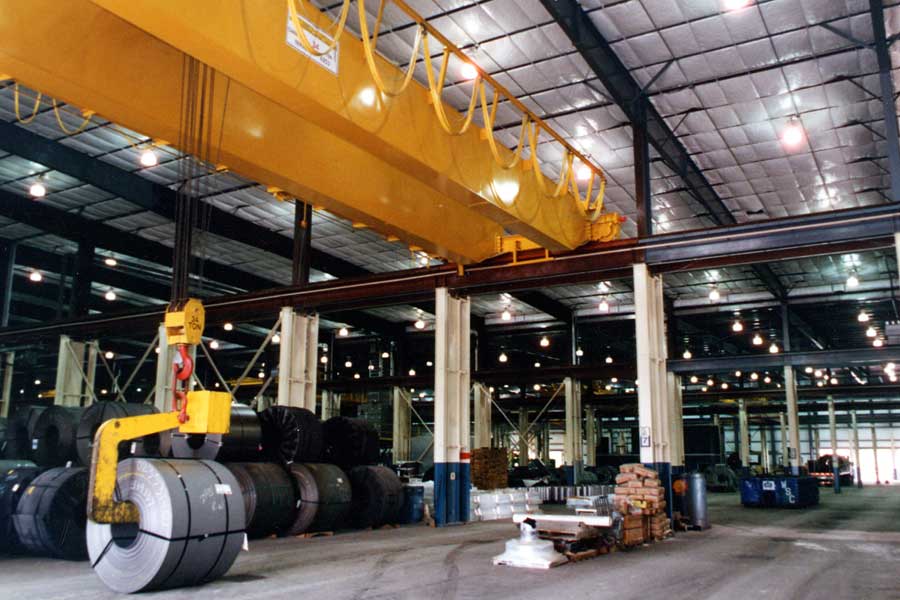As a business owner, you often think of your industry in terms of the big picture. You must create professional networks, meet industry standards and plan for the future of your business.
However, no matter how large your endeavor becomes, you must also be aware of small details that can have a large impact. One of these small details is the safety and comfort of your employees during regular working conditions.
In industrial and commercial industries, these individual employee needs may be combined together under the category of “ergonomics.” In this context, ergonomics includes all measures taken to reduce the physical and mental stress on employees in a particular position.
In this blog, we discuss the importance of ergonomics in industrial settings, specifically for overhead lifting equipment operators. We also provide an overview of how employers can make overhead lifting equipment more ergonomic for their workers.
The Importance of Ergonomics in Industrial Settings
The work performed by employees in industrial settings can be among the most hazardous and most strenuous available. In order to protect employees’ wellbeing and provide a working environment that complies with OSHA regulations, employers must consider the practicality of their equipment and processes.
Often, this consideration inherently includes ergonomics measures. Even when employees in warehouses, manufacturing plants, packaging centers, and other varieties of industrial settings are relatively safe from an acute injury, such as lacerations, these workers tend to be at high risk for other progressive issues.
For example, an operator who uses a forklift, crane, or other heavy-duty equipment is at risk of spinal issues due to the long periods of sitting down, carpal tunnel syndrome from moving the controls, and nerve conditions due to the vibration of the machinery.
In these high-stakes settings, ergonomics makes everyday work more comfortable and, more importantly, reduces the risk of employees developing work-related health conditions during their careers. In this way, ergonomic measures protect both the employees from injury and the employers from liability.
The Ergonomic Challenges of Overhead Lifting Equipment
Overhead lifting is an essential part of many industrial job sites. In construction and manufacturing, materials must be lifted up to the appropriate level before the next step in the overall process can occur. In warehousing and similar settings, items may need to be lifted up to an out-of-the-way storage area.
Generally, overhead lifting of any real magnitude is handled by cranes and crane operators. At outdoor job sites, the cranes used may be truck-mounted so that the operator can access all sections of the site. However, indoors, overhead cranes are used almost exclusively.
In the past, overhead lifting equipment operators had to handle a fair amount of lifting themselves in order to put a load in place for a crane. Additionally, operators also had to deal with all the stressors of heavy equipment operation as discussed in the previous section.
Luckily, modern overhead lifting equipment reduces or even eliminates many of the concerns that existed when using older machinery.
The Ergonomic Solutions for Overhead Cranes
Contemporary overhead cranes are often considered an ergonomic solution in and of themselves. Newer cranes are designed to reduce the amount of manual lifting that an employee needs to perform, as well as the number of employees required to safely complete lifting tasks.
Current ergonomic measures for overhead cranes also include:
- Anti-sway equipment that reduces the injury risks associated with overhead lifting
- Powered overhead systems that eliminate the need for the operator to find and connect to rigging by sight and feel alone, which additionally reduces the risk of skin or clothing catching in pinch points during lifting
- Three-dimensional routing programming that allows the crane to move primarily under its own direction, which reduces wasted time and the risk of injury, especially in settings where the crane is only needed for one repetitive task
- Sensors and smart programming that helps the crane recognize overloads and other potentially dangerous problems
- Sturdy and comfortably designed seats and controls to minimize the physical impact of crane operation
- Wireless crane controls that help ensure operators are standing out of range of any load movement
Employers can also make overhead crane operation more ergonomic by having any permanent crane workstations created specifically for the task at hand. These workstations are ideal for dedicated facilities that handle set manufacturing or warehouse tasks and do not need the mobility of a truck-mounted crane.
The success of your business starts at your primary facilities. If you are establishing a new facility or want to refurbish an existing facility, you want to make sure that your equipment is as efficient and as ergonomic as possible.
As you work toward providing your workers with the safest job environment, consult with American Equipment. Not only do we provide the lifting equipment you need to complete work tasks, but we also offer the insight, intuitive design, and ergonomic products necessary to ensure work tasks are completed correctly. Find your local American Equipment team.


